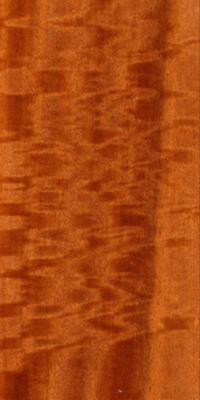KOTIBE
Kotibe is an exotic wood species native to West and Central Africa. The wood is reddish brown and is used in interior and exterior carpentry.
Read the Tropix sheet (CIRAD).
Botanical name(s) :
Nesogordonia fouassieri, Nesogordonia papaverifera
Family: MALVACEAE (angiosperm)
Commercial restriction : no commercial restriction
Kotibe is a tropical tree reaching 35 m in height and 80 cm in diameter. Its silhouette is quite recognizable: the trunk has buttresses and its narrow crown has only a few large branches.
Where to buy kotibe timber?
kotibe TIMBER USES
The tropical timber kotibe is used in interior joinery. It is also a material adapted to outdoor uses under cover.
It can be used for the following purpose:
Structures and panels
- Plywood, inside face and outside face
- Plywood, inner layers
- Sliced veneer
Exterior joinery (building facade)
Carpentry and interior fittings
- Wooden floors
- Interior staircases
- Doors and door frames
- Interior panelling and cladding
- Layout and furnishings
- Furniture and cabinetmaking
Industrial usage and heavy work
- Vehicle, wagon and container bottom (or floor)
Miscellaneous uses
- Turnery, cutlery and brushmaking
- Tool handles
- Sculptures
Where to buy kotibe timber?
DISTRIBUTION AREA OF kotibe
The exotic species kotibe is found in West and Central Africa.
ECOLOGY and Biology of kotibe
The exotic species kotibe is a deciduous species, which tolerates shade. It is found in evergreen and semi-deciduous forests. The winged seeds are dispersed by the wind.
DESCRIPTION OF kotibe TIMBER
- Color: red brown
- Sapwood: clearly demarcated
- Texture: fine
- Grain: straight or interlocked
- Interlocked grain: slight
kotibe: PHYSICAL AND MECHANICAL PROPERTIES
Read the Tropix sheet of kotibe (CIRAD).
kotibe: NATURAL DURABILITY AND TREATABILITY
- Funghi: class 3 - moderately durable
- Dry wood borers: durable - sapwood demarcated (risk limited to sapwood)
- Termites : class M - moderately durable
- Treatability: class 3-4 - poorly or not permeable
- Use class ensured by natural durability: class 2 - inside or outside under cover (dampness possible)
- Species covering the use class 5: No
PROCESSING OF kotibe TIMBER
Read the Tropix sheet of kotibe (CIRAD).
Sources :
- CIRAD
- ATIBT
- Q. Meunier, C. Moumbogou, J.-L. Doucet, 2015, Les arbres utiles du Gabon
use(s) for this species :
subscribe to the newsletter
Sign up to receive our Newsletters every week


